
Severe thunderstorms, excessive rainfall, critical fire weather are all in the outlook today and into this last weekend of April. Very large hail, severe wind gusts, and a couple strong tornadoes will all be possible across the central and southern Plains today. Flash flooding also possible for portions of the Plains and Mississippi Valley. Critical fire weather conditions for Southern High Plains Read More >
Climate data on this page is PRELIMINARY (unofficial). CERTIFIED (official) climate data is available from the National Climatic Data Center (NCDC).
Use the menus below to search based on year and location.
Click on the images below to enlarge.
|
Year 2014 |
One year data to current |
 |
|
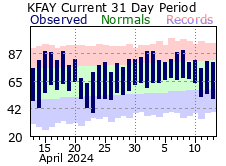 |
||
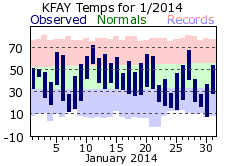 |
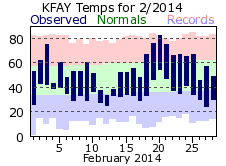 |
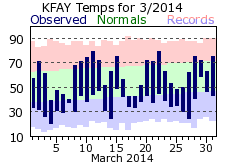 |
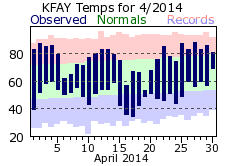 |
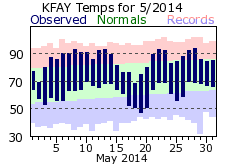 |
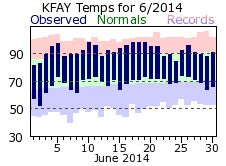 |
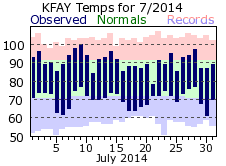 |
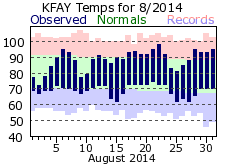 |
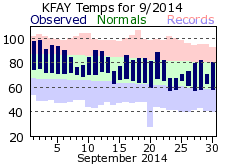 |
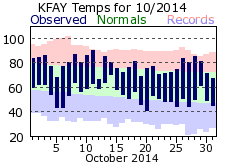 |
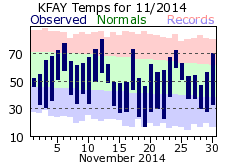 |
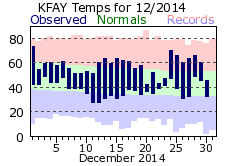 |
How to Read the Plots:This is an example of the monthly climate plot. The observed high and low temperatures are indicated by the tops and bottoms of the vertical blue bars, respectively. The normal temperature ranges are indicated by the green band. Record highs are shown on the top of the light pink band, and record lows are indicated along the bottom of the light blue band. |